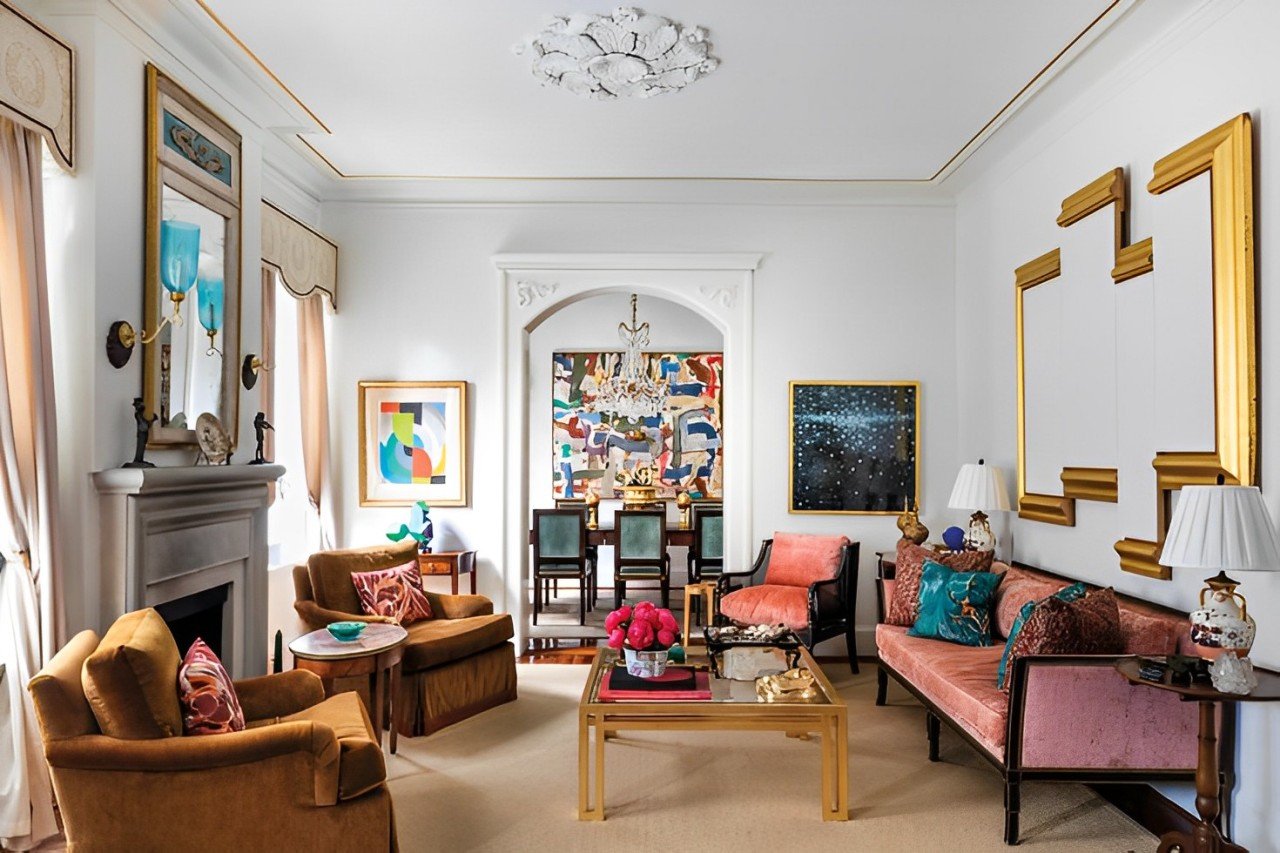Why are color schemes important in interior design? Color schemes are crucial because they influence the mood, style, and perception of space. A thoughtful palette can make a room feel welcoming, balanced, and visually appealing, enhancing both its functionality and aesthetic.
Introduction to Color Theory
Understanding color theory is fundamental to creating harmonious and impactful interior spaces. Let’s dive into the essential elements that make up this fascinating aspect of design.
At its core, color theory starts with understanding the basics of the color wheel. This foundation helps designers and homeowners make informed decisions about their space’s visual appeal. The building blocks begin with primary, secondary, and tertiary colors, which form the basis of all color combinations.
One of the most crucial aspects of color theory is understanding how different colors interact with each other. These color relationships and harmonies create the foundation for successful interior design schemes. Whether you’re aiming for bold contrasts or subtle transitions, these principles guide the way colors work together in a space.
Color theory isn’t just about aesthetics – it’s also about psychology. Different colors can evoke specific emotions and create distinct atmospheres:
- Warm colors like red bring energy and passion
- Orange sparks creativity and enthusiasm
- Blue creates a sense of calm and serenity
- Green connects us to nature and balance
By understanding these fundamental principles of color theory, you can make more confident decisions about your interior design choices and create spaces that not only look beautiful but also feel exactly the way you want them to.
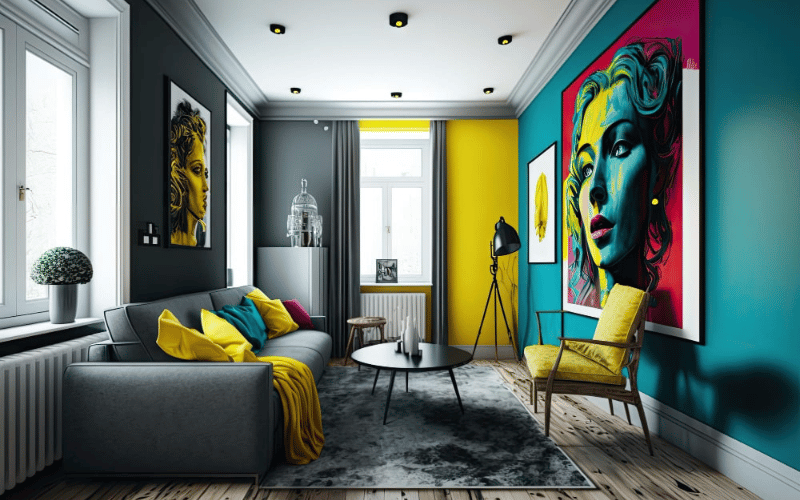
Types of Color Schemes: Creating Harmonious Interior Spaces
Understanding different color schemes is essential for creating visually appealing and harmonious interior spaces. Let’s explore the main types of color schemes that can transform your home:
1. Monochromatic
A monochromatic color scheme uses different versions of a single base color, including tints (mixed with white), shades (mixed with black), and tones (mixed with gray) to create depth and interest. This approach produces a cohesive look that guides the eye while maintaining enough contrast to keep the design engaging. The consistent color palette creates an elegant and welcoming space with a natural sense of calm and organization.
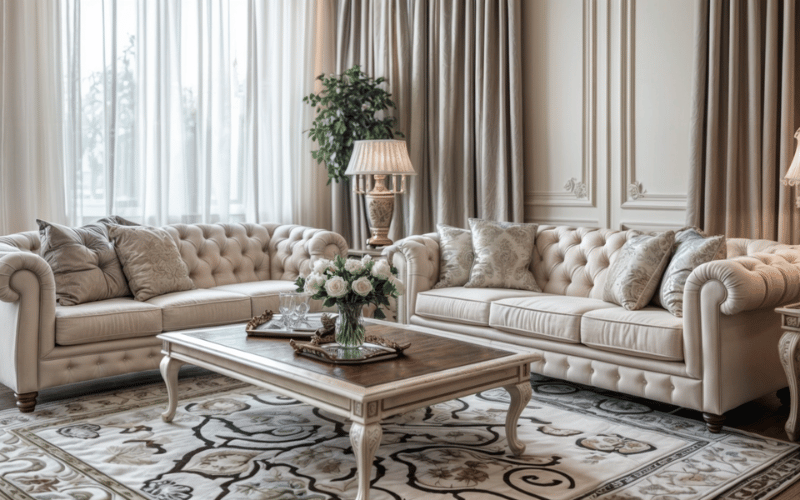
2. Complementary
Complementary color schemes use colors opposite each other on the color wheel, creating dynamic visual contrast while maintaining balance. This pairing energizes spaces through opposing hues, with one color typically dominant and its complement as an accent. When using complementary colors, carefully balance their intensity and proportion to avoid overwhelming the space while creating visual interest.
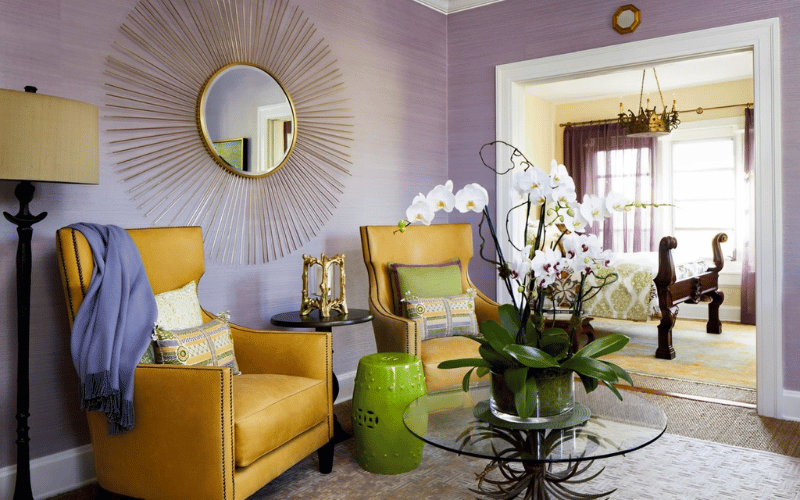
3. Analogous
Analogous color schemes artfully incorporate colors that sit adjacent to each other on the traditional color wheel, creating a naturally flowing visual progression that’s inherently pleasing to the eye. This thoughtful arrangement of closely related hues establishes a sophisticated and harmonious atmosphere within your space, allowing for subtle transitions that feel both intentional and organic.
The foundation of successful color scheme implementation rests firmly on developing a deep understanding of how different colors influence both our emotional responses and our spatial perception. This knowledge becomes particularly crucial when designing spaces that need to serve specific purposes or evoke particular moods. For example:
- Warm colors like red can infuse a room with vibrant energy and passionate intensity, making them perfect for social spaces where you want to encourage interaction and activity
- Blue introduces a profound sense of tranquility and serenity to any environment, helping to create peaceful sanctuaries perfect for relaxation and contemplation
- Green serves as a powerful bridge between indoor and outdoor spaces, fostering a deep connection to nature while promoting a sense of balance and harmony in your environment
By thoroughly understanding and thoughtfully applying these color relationships in your design process, you can craft spaces that transcend mere visual appeal to create deeply resonant environments that not only look stunning but also successfully evoke precisely the emotional responses and atmospheric qualities you’re seeking to achieve.
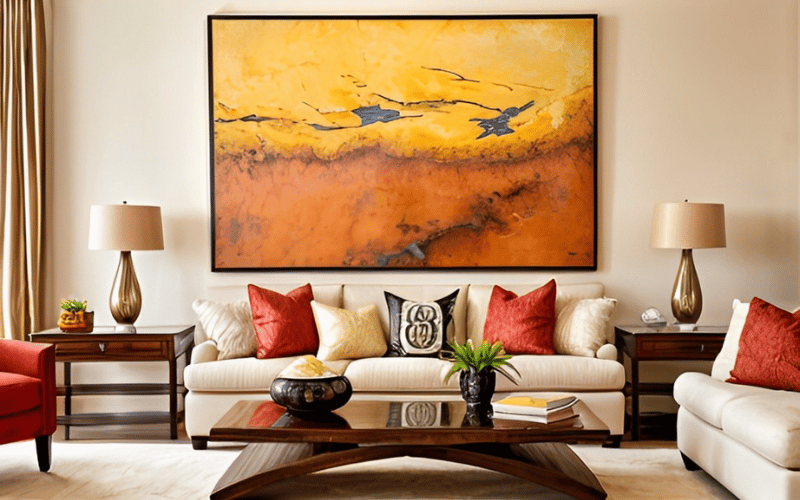
Psychology of Colors: How Different Hues Shape Our Living Spaces
Colors are not merely aesthetic choices in interior design – they are sophisticated instruments that wield considerable influence over our psychological and emotional states, fundamentally shaping how we experience and interact with our surroundings. A deep understanding of the psychological implications of different colors is essential for creating environments that transcend pure visual appeal to create profound emotional resonance and comfort.
Warm Colors and Their Dynamic Impact:
- Red infuses spaces with vibrant energy and passionate intensity, making it ideal for areas meant to stimulate conversation and activity
- Orange awakens creative potential and generates enthusiasm, perfect for workspaces and areas dedicated to artistic pursuits
- Yellow radiates optimism while enhancing mental clarity and cognitive function, making it excellent for study areas and morning rooms
Cool Colors and Their Transformative Effects:
- Blue establishes a deeply calming and serene atmosphere, creating peaceful sanctuaries ideal for relaxation and contemplation
- Green forges a powerful connection to the natural world while promoting balance and harmony, perfect for transitional spaces and areas of renewal
- Purple introduces an element of sophisticated luxury while nurturing creative thinking, ideal for spaces dedicated to imagination and reflection
The true power of color psychology manifests in its practical implementation within our living spaces. These emotional and behavioral responses to color aren’t abstract concepts – they are tangible forces that actively influence our daily experiences and interactions within our environments, shaping everything from our mood to our productivity levels.
Through careful consideration and strategic combination of colors, you can craft environments that not only captivate visually but also orchestrate specific emotional responses and cultivate precisely the atmosphere you envision, creating spaces that resonate deeply with their intended purpose and the people who inhabit them.
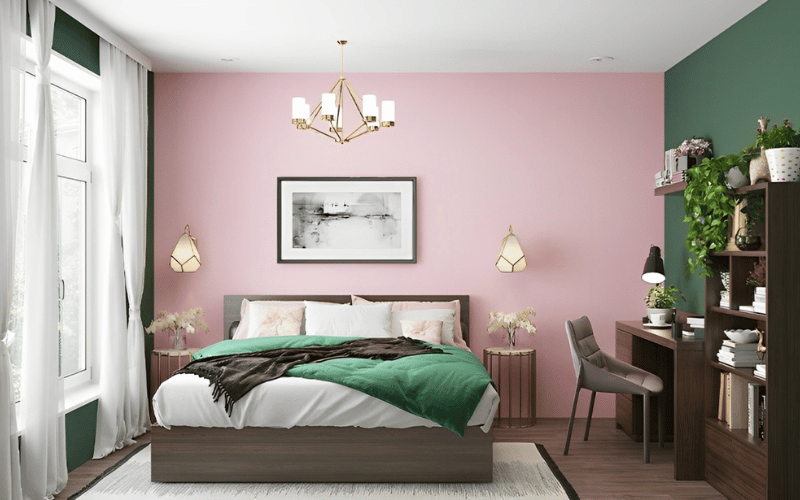
Practical Applications: A Guide to Implementing Color Schemes in Your Home
When it comes to applying color theory in your home, success lies in understanding how different spaces serve different purposes. Let’s explore practical ways to implement color schemes throughout your living spaces.
Room-Specific Color Solutions
Each room in your home deserves its own carefully considered color strategy, as different spaces serve distinct purposes and should evoke specific emotional responses:
- Living Rooms: Create welcoming gathering spaces with thoughtful color combinations that encourage conversation and social interaction. Consider warm, inviting tones for the main walls balanced with complementary accents that add visual interest and depth to the space
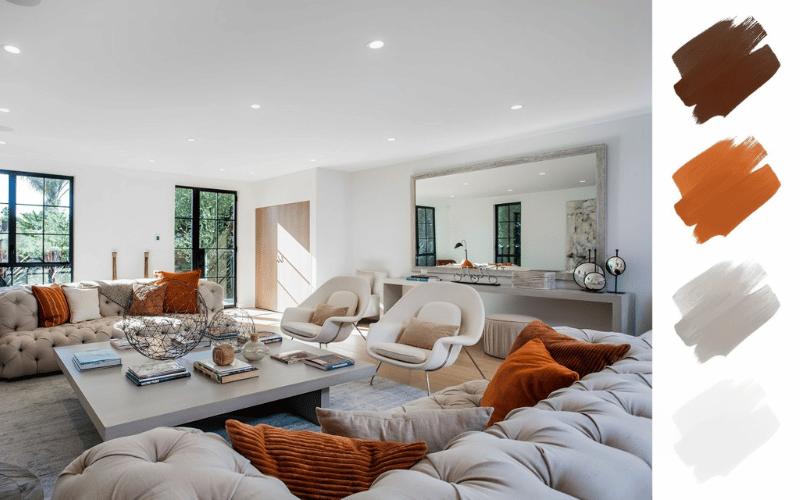
- Bedrooms: Design restful retreats with carefully selected color palettes that promote relaxation and tranquility. Focus on soft, soothing hues that help create a peaceful atmosphere conducive to rest and rejuvenation
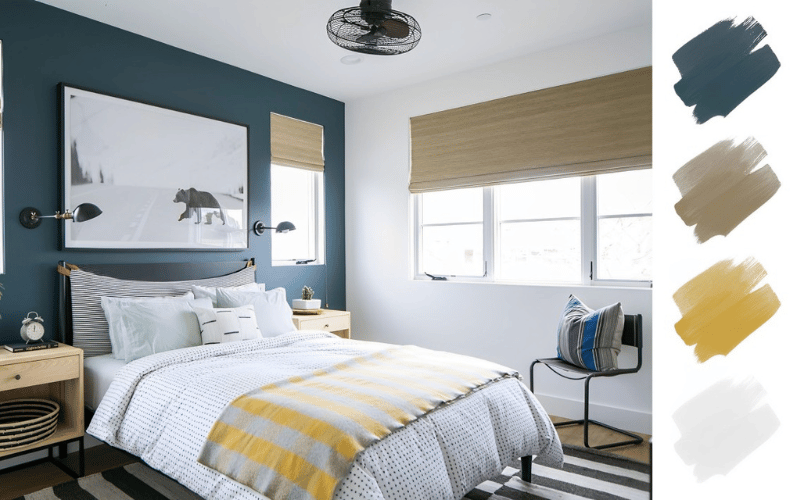
- Kitchens: Implement strategic color choices that enhance both functionality and aesthetics while maintaining an energetic yet balanced environment. Consider colors that stimulate appetite and creativity while ensuring the space remains practical and easy to navigate.
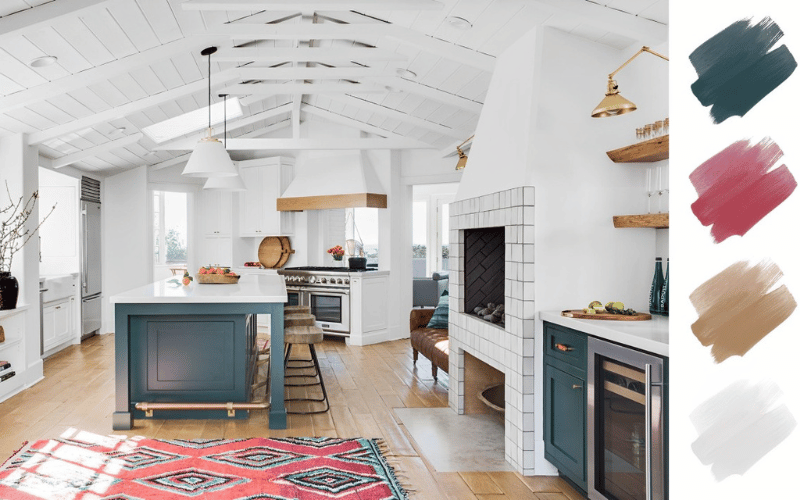
Adapting to Seasons and Light
Consider how natural and artificial lighting conditions interact with your chosen colors throughout different times of day and seasons. Morning light, afternoon sun, and evening illumination can dramatically alter how colors appear in your space. Additionally, seasonal changes bring varying qualities of natural light – from the bright, direct sunlight of summer to the softer, more diffused winter light. Understanding these dynamics allows you to select colors that remain aesthetically pleasing and functionally appropriate regardless of the time of year or lighting conditions. This thoughtful consideration of light and seasonality ensures your space maintains its intended atmosphere and visual appeal throughout the year’s natural cycles.
Color Implementation Strategies
For successful color implementation in your interior spaces, consider these essential strategic approaches that will help you create harmonious and visually appealing environments:
- Follow the 60-30-10 rule for balanced color distribution, which ensures a perfect balance between your dominant color (60%), secondary color (30%), and accent color (10%) to create visual harmony throughout your space
- Create smooth color transitions between different rooms by using complementary or analogous color schemes that flow naturally from one space to another, maintaining a cohesive and unified aesthetic throughout your home
- Work with your existing elements and furnishings by carefully considering how new color choices will interact with current furniture, architectural features, and decorative pieces to create a seamlessly integrated design
Remember that colors can significantly influence our emotions and behaviors in profound ways. When thoughtfully selected and artfully combined, they have the power to transform ordinary spaces into extraordinary environments that not only look visually appealing but also evoke specific emotional responses and create precisely the atmosphere you envision. The key lies in understanding how different colors work together and how they can be leveraged to achieve your desired aesthetic and emotional impact in each room.
Common Mistakes and Solutions
Common Mistakes and Solutions in Color Design
When it comes to interior color design, even small mistakes can impact the overall feel of your space. Here are the key pitfalls to avoid and their solutions:
1. Color Overwhelm
One of the most common mistakes is using too many colors at once. This can make a space feel chaotic and unbalanced.
Solution: Follow the 60-30-10 rule for balanced color distribution. This provides a structured approach to incorporating different colors while maintaining harmony.
2. Poor Color Flow
A frequent oversight is failing to consider how colors transition between different rooms.
Solution: Create thoughtful color transitions between spaces, ensuring a cohesive flow throughout your home.
3. Ignoring Existing Elements
Many people make the mistake of choosing colors without considering their existing furnishings and elements.
Solution: Work with your existing elements and furnishings when selecting new colors. This ensures a harmonious integration of new and existing pieces.
4. Skipping the Testing Phase
Another crucial mistake is not properly testing colors before committing to them.
Solution: Always use testing and sampling methods to ensure your chosen colors work in your specific space and lighting conditions.
5. Neglecting Color Psychology
Overlooking how colors affect emotions and behavior can lead to spaces that don’t feel right. Different colors evoke specific responses:
- Warm colors like red bring energy and passion
- Blue creates a calming atmosphere
- Green promotes balance and connection to nature
Solution: Consider the psychological impact of colors when designing your space to create the desired atmosphere and emotional response.
Implementation Tips: Making Color Theory Work in Your Space
Successfully implementing color schemes in your interior design requires careful planning and attention to detail. Here are the key strategies to ensure your color choices create the perfect atmosphere:
The 60-30-10 Rule
This fundamental principle helps create balanced color distribution throughout your space. The rule suggests:
- 60% should be your dominant color
- 30% should be your secondary color
- 10% should be your accent color
Room-to-Room Flow
Creating smooth color transitions between different rooms is essential for a cohesive home design. Consider how colors in adjacent spaces work together to maintain visual harmony throughout your home.
Working with Existing Elements
When implementing new color schemes, it’s crucial to consider your existing furnishings and architectural elements. This ensures a harmonious integration of new and existing design elements.
Remember that colors significantly influence our emotional responses and behaviors in a space. For example:
- Warm colors like red can energize a space
- Blue creates a calming atmosphere
- Green helps establish a natural balance
By following these implementation tips and understanding color psychology, you can create spaces that not only look visually appealing but also evoke the exact emotional response you’re aiming for.
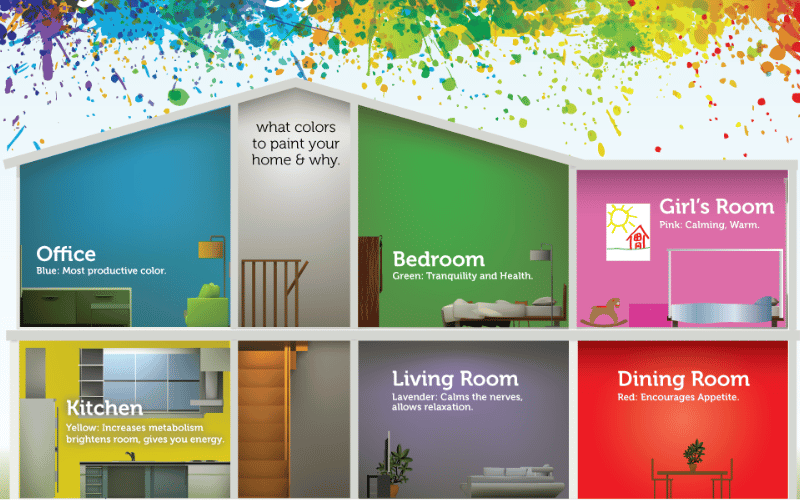
Conclusion
Understanding and implementing color theory in interior design is both an art and a science. Throughout this guide, we’ve explored how colors can transform spaces, influence emotions, and create harmonious environments that truly reflect your vision.
The key takeaways from our exploration of color in interior design are:
- Color choices should be intentional, considering both aesthetic appeal and psychological impact
- Successful color schemes follow established principles while allowing room for personal expression
- The right combination of colors can dramatically transform any space, making it both beautiful and functional
Remember, while these guidelines provide a strong foundation, don’t be afraid to trust your instincts and experiment with colors that speak to you. Whether you’re planning a complete home makeover or simply refreshing a single room, thoughtful color selection will help you create spaces that both look and feel exactly as you envision.
For complex projects or when you need additional guidance, consulting with a professional interior designer can provide valuable insights and help you achieve your desired results with confidence.
>> Learn more: How to Hang Plates, Platters & Bowls with Confidence and Style


